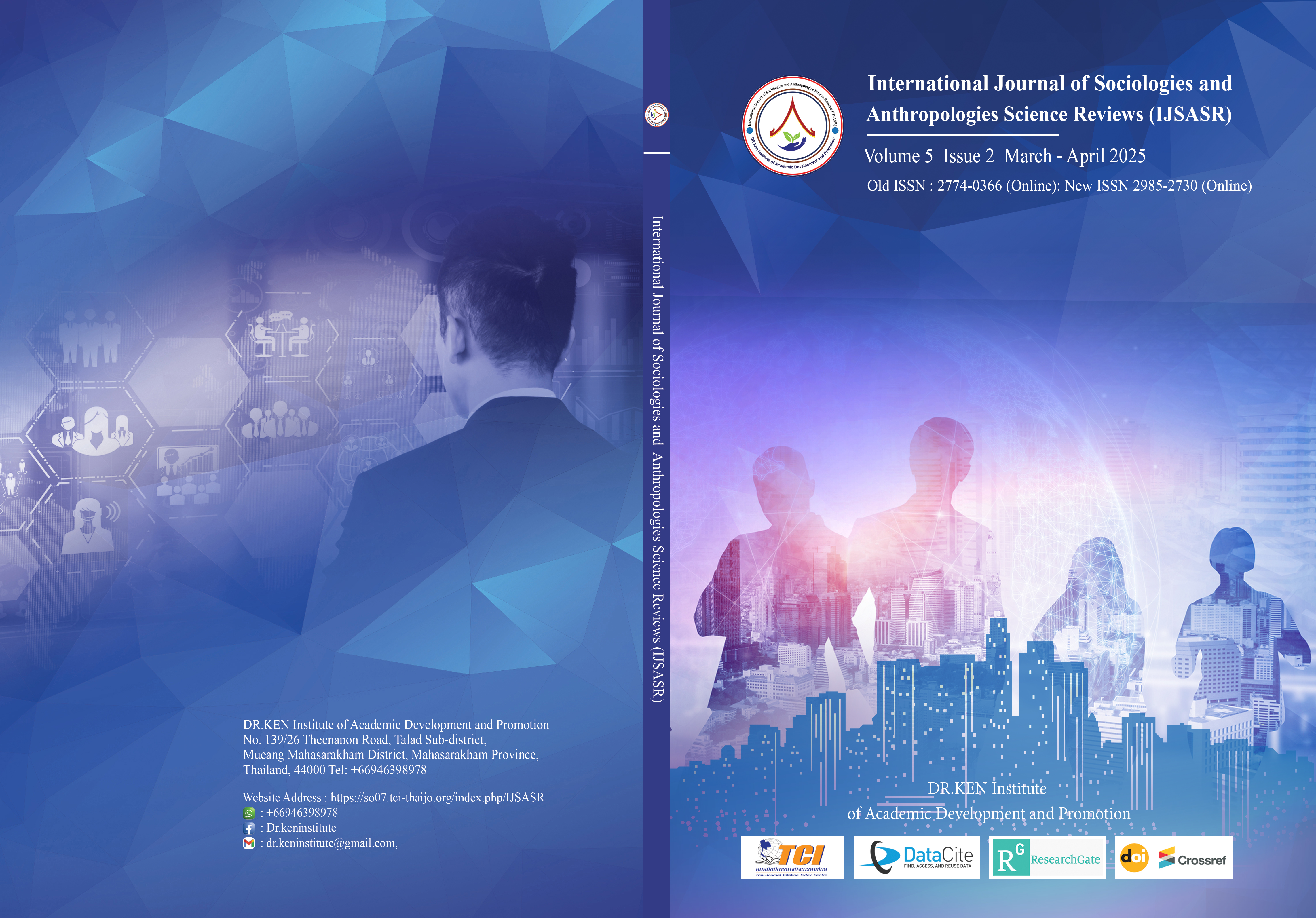Developing Dance Exercise Model for the Elderly
Main Article Content
Abstract
Background and Aim: Creating a dance exercise model for the elderly is important because it improves physical fitness, balance, and flexibility while also promoting mental well-being by lowering stress and cognitive decline. It also encourages social interaction, which reduces feelings of isolation and improves overall quality of life. Thus, the study aimed to develop a dance exercise model tailored for the elderly population in Guangdong Province through qualitative research.
Materials and Methods: The research employed interviews with 19 experts, guided by Buridge and Rickeymore’s theory of managerial functions in organizational planning. The study involved selecting a specific sample group, including presidents of dance associations (past or present) with at least 5 years of experience (4 participants), dance instructors with 5 years of teaching experience (5 participants), dance champions with 3 years of experience (5 participants), and individuals with 5 years of experience in exercise (5 participants). The data was evaluated on a 5-point scale, and the Delphi technique was used for consensus building through two subsequent rounds of expert meetings, utilizing median statistics (MDN) and interquartile range (IR) for data analysis.
Results: The research identified several key elements in the development of a strategic planning model, including policy formulation, SWOT analysis, TOWS Matrix, and the design of dance steps and training processes. The model also emphasized the importance of establishing appropriate values, creating motivation, reducing the risk of disease, and fostering leadership and teamwork. The study recommended organizing training systems to measure physical fitness, practicing basic ballroom and Latin dance, and ensuring appropriate practices both indoors and outdoors. The involvement of nurses in monitoring participants' health, stress management, and vision-focused leadership was also highlighted. The dance exercise model for the elderly included warm-up and cool-down routines, balance practice, stress tests, SATST tests, and a rhythm-based practice sequence. The study also recommended measuring pulse rates before and after exercise, assessing team potential, and maintaining good health. The model was further refined through group discussions with health experts, leading to an improved dance form. Pre- and post-dance physical tests, evaluations using the PDCA cycle, and nurse-supervised adjustments to balance and exercise size were included to ensure appropriate dance forms and effective post-evaluations.
Conclusion: The study successfully developed a comprehensive dance exercise model for the elderly that integrates strategic planning, health monitoring, and physical fitness practices, providing a structured approach to promoting health and well-being among the elderly in Guangdong Province.
Article Details

This work is licensed under a Creative Commons Attribution-NonCommercial-NoDerivatives 4.0 International License.
Copyright on any article in the International Journal of Sociologies and Anthropologies Science Reviews is retained by the author(s) under the under the Creative Commons Attribution-NonCommercial-NoDerivatives 4.0 International License. Permission to use text, content, images, etc. of publication. Any user to read, download, copy, distribute, print, search, or link to the full texts of articles, crawl them for indexing, pass them as data to software, or use them for any other lawful purpose. But do not use it for commercial use or with the intent to benefit any business.

References
American College of Sports Medicine. (2012). ACSM's resource manual for guidelines for exercise testing and prescription. Lippincott Williams & Wilkins.
Dai, S., Newman, J. I., Xue, H., & Du, J. (2022). The dancefloor is now open: A dispositional analysis of the glocalization and certification of Chinese Dance Sport. International Review for the Sociology of Sport, 57(4), 575-596.
Du, X., Li, J., & Tong, D. (2023). Analysis of Chinese and foreign outstanding dancers in the 2022 Latin Dance World Championships. Comparative analysis of the choreography of Chacha dance. Sports. 4, 66-67. dai:10.1937/j.issn.
Li, J. (2019). The possible mechanisms of aerobic exercise combined with resistance training on cardiovascular function in obese male people Sports Science. 88, 1-10.
Li, Y., Zhai, Q., Li, G., & Peng, W. (2024). Effects of Different Aerobic Exercises on Blood Lipid Levels in Middle-Aged and Elderly People: A Systematic Review and Bayesian Network Meta-Analysis Based on Randomized Controlled Trials. In Healthcare. 12 (13), 1309-1315.
Lu, P. (2019). Tai Chi: A New and Ancient Reality: The Socio-Cultural Context of Older People who Practice Tai Chi in Halifax, Canada and Jinan, China. Doctoral dissertation: Canada and Jinan, China
Shilton, T. (2008). Creating and making the case: global advocacy for physical activity. Journal of physical activity and health, 5(6), 765-776.
Wang, L., Guo, F., Zhao, C., Zhao, M., Zhao, C., Guo, J., ... & Zhu, W. (2023). The effect of aerobic dancing on physical fitness and cognitive function in older adults during the COVID-19 pandemic-a natural experiment. Sports Medicine and Health Science, 5(3), 196-204.
Yu, L. and Buck, R. (2022) ‘Competition in tertiary ballroom dance education in China: “a double-edged sword”’, Research in Dance Education, pp. 1–19. Available at: https://doi.org/10.1080/14647893.2022.2114447






